Dynasty
A dynasty (UK: /ˈdɪnəsti/, US: /ˈdaɪnəsti/) is a sequence of rulers from the same family,[1] usually in the context of a feudal or monarchical system, but sometimes also appearing in elective republics. Alternative terms for "dynasty" may include "house", "family" and "clan", among others. The longest-surviving dynasty in the world is the Imperial House of Japan, otherwise known as the Yamato dynasty, whose reign is traditionally dated to 660 BC.
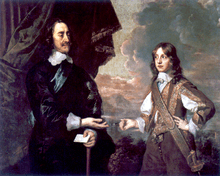
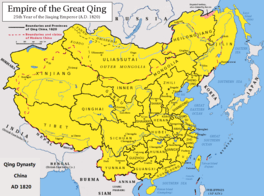
The dynastic family or lineage may be known as a "noble house",[2] which may be styled as "imperial", "royal", "princely", "ducal", "comital", "baronial" etc., depending upon the chief or present title borne by its members.
Historians periodize the histories of many nations and civilizations, such as Ancient Egypt (3100–30 BC) and Imperial China (221 BC–AD 1912), using a framework of successive dynasties. As such, the term "dynasty" may be used to delimit the era during which a family reigned, and also to describe events, trends and artifacts of that period (e.g., "a Ming-dynasty vase"). The word "dynasty" itself is often dropped from such adjectival references (e.g., "a Ming vase").
Until the 19th century, it was taken for granted that a legitimate function of a monarch was to aggrandize his dynasty: that is, to expand the wealth and power of his family members.[3]
Prior to the 20th century, dynasties throughout the world have traditionally been reckoned patrilineally, such as under the Frankish Salic law. In nations where it was permitted, succession through a daughter usually established a new dynasty in her husband's ruling house. This has changed in some places in Europe, where succession law and convention have maintained dynasties de jure through a female. For instance, the House of Windsor will be maintained through the children of Queen Elizabeth II, as it did with the monarchy of the Netherlands, whose dynasty remained the House of Orange-Nassau through three successive queens regnant. The earliest such example among major European monarchies was in the Russian Empire in the 18th century, where the name of the House of Romanov was maintained through Grand Duchess Anna Petrovna. This also happened in the case of Queen Maria II of Portugal, who married Prince Ferdinand of Saxe-Coburg-Gotha, but whose descendants remained members of the House of Braganza, per Portuguese law. In Limpopo Province of South Africa, Balobedu determined descent matrilineally, while rulers have at other times adopted the name of their mother's dynasty when coming into her inheritance. Less frequently, a monarchy has alternated or been rotated, in a multi-dynastic (or polydynastic) system—that is, the most senior living members of parallel dynasties, at any point in time, constitute the line of succession.
Not all feudal states or monarchies were or are ruled by dynasties; modern examples are the Vatican City State, the Principality of Andorra, and the Sovereign Military Hospitaller Order of Saint John of Jerusalem, of Rhodes and of Malta. Throughout history, there were monarchs that did not belong to any dynasty; non-dynastic rulers include King Arioald of the Lombards and Emperor Phocas of the Byzantine Empire. Dynasties ruling subnational monarchies do not possess sovereign rights; two modern examples are the monarchies of Malaysia and the royal families of the United Arab Emirates.
The word "dynasty" is sometimes used informally for people who are not rulers but are, for example, members of a family with influence and power in other areas, such as a series of successive owners of a major company. It is also extended to unrelated people, such as major poets of the same school or various rosters of a single sports team.[1]
Etymology
The word "dynasty" derives from Latin dynastia, which comes from Greek dynastéia (δυναστεία), where it referred to "power", "dominion", and "rule" itself.[4] It was the abstract noun of dynástēs (δυνάστης),[5] the agent noun of dynamis (δύναμις), "power" or "ability",[6] from dýnamai (δύναμαι), "to be able".[7]
Dynast
A ruler from a dynasty is sometimes referred to as a "dynast", but this term is also used to describe any member of a reigning family who retains a right to succeed to a throne. For example, King Edward VIII ceased to be a dynast of the House of Windsor following his abdication.
In historical and monarchist references to formerly reigning families, a "dynast" is a family member who would have had succession rights, were the monarchy's rules still in force. For example, after the 1914 assassinations of Archduke Franz Ferdinand of Austria and his morganatic wife, their son Maximilian, Duke of Hohenberg, was bypassed for the Austro-Hungarian throne because he was not a Habsburg dynast. Even since the abolition of the Austrian monarchy, Duke Maximilian and his descendants have not been considered the rightful pretenders by Austrian monarchists, nor have they claimed that position.
The term "dynast" is sometimes used only to refer to agnatic descendants of a realm's monarchs, and sometimes to include those who hold succession rights through cognatic royal descent. The term can therefore describe overlapping but distinct sets of people. For example, David Armstrong-Jones, 2nd Earl of Snowdon, a nephew of Queen Elizabeth II, is in the line of succession to the British crown; making him a British dynast. On the other hand, since he is not a patrilineal member of the British royal family, he is therefore not a dynast of the House of Windsor.
Comparatively, the German aristocrat Prince Ernst August of Hanover, a male-line descendant of King George III of the United Kingdom, possesses no legal British name, titles or styles (although he is entitled to reclaim the former royal dukedom of Cumberland). He was born in the line of succession to the British throne and was bound by Britain's Royal Marriages Act 1772 until it was repealed when the Succession to the Crown Act 2013 took effect on 26 March 2015.[8] Thus, he requested and obtained formal permission from Queen Elizabeth II to marry the roman catholic Princess Caroline of Monaco in 1999. Yet, a clause of the English Act of Settlement 1701 remained in effect at that time, stipulating that dynasts who marry roman catholics are considered "dead" for the purpose of succession to the British throne.[9] That exclusion, too, ceased to apply on 26 March 2015, with retroactive effect for those who had been dynasts prior to triggering it by marriage to a Roman Catholic.[8]
A "dynastic marriage" is one that complies with monarchical house law restrictions, so that the descendants are eligible to inherit the throne or other royal privileges. The marriage of King Willem-Alexander of the Netherlands to Queen Máxima Zorreguieta in 2002 was dynastic, for example, making their eldest child Princess Catharina-Amalia the heir apparent to the Crown of the Netherlands. However, the marriage of his younger brother Prince Friso of Orange-Nassau in 2003 lacked governmental support and parliamentary approval. Thus, Prince Friso forfeited his place in the order of succession to the Dutch throne, and consequently lost his title as a "Prince of the Netherlands", and left his children without dynastic rights.
Gallery
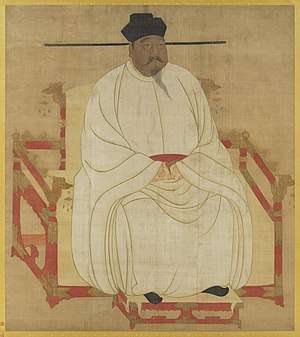 Zhao Kuangyin, the Emperor Taizu of Song, was the founder of the Song dynasty in China.
Zhao Kuangyin, the Emperor Taizu of Song, was the founder of the Song dynasty in China.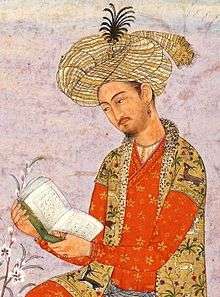
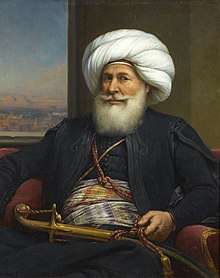 Muhammad Ali Pasha, founder of the Muhammad Ali dynasty, ruled Egypt and Sudan from 1805 to 1848.
Muhammad Ali Pasha, founder of the Muhammad Ali dynasty, ruled Egypt and Sudan from 1805 to 1848.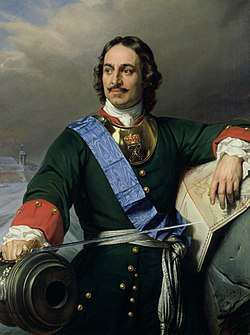 Peter I, from the House of Romanov, was the first Russian monarch to rule as emperor.
Peter I, from the House of Romanov, was the first Russian monarch to rule as emperor.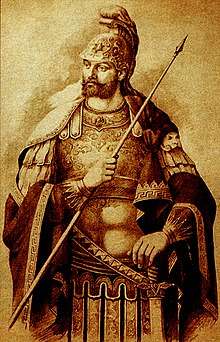 Constantine XI Palaiologos, of the Palaiologos dynasty, was the final monarch of the Byzantine Empire.
Constantine XI Palaiologos, of the Palaiologos dynasty, was the final monarch of the Byzantine Empire.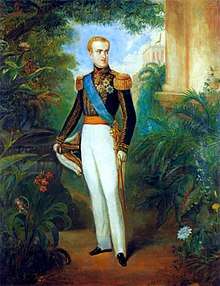 Pedro II, from the Most Serene House of Braganza, ruled Brazil from 1831 to 1889.
Pedro II, from the Most Serene House of Braganza, ruled Brazil from 1831 to 1889.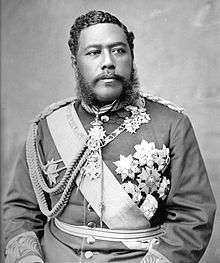 Kalākaua, founder of the House of Kalākaua, was the penultimate sovereign ruler of the Kingdom of Hawaiʻi.
Kalākaua, founder of the House of Kalākaua, was the penultimate sovereign ruler of the Kingdom of Hawaiʻi.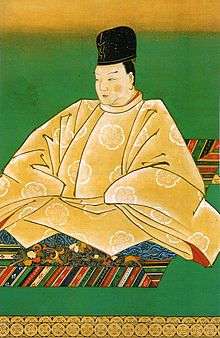 Asahito, the Emperor Higashiyama, from the Imperial House of Japan, was the 113th Japanese emperor.
Asahito, the Emperor Higashiyama, from the Imperial House of Japan, was the 113th Japanese emperor.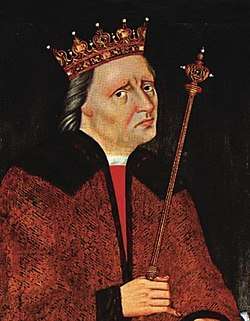 Christian I, from the House of Oldenburg, served as king of Denmark, Norway and Sweden.
Christian I, from the House of Oldenburg, served as king of Denmark, Norway and Sweden.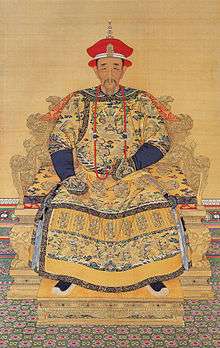 Aisin Gioro Xuanye, the Kangxi Emperor, of the Qing dynasty, was the longest reigning emperor of China.
Aisin Gioro Xuanye, the Kangxi Emperor, of the Qing dynasty, was the longest reigning emperor of China.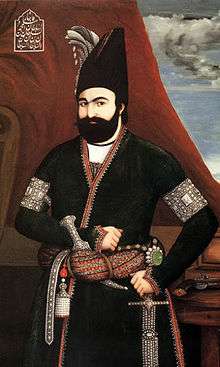 Mohammad Shah Qajar was a king of Persia from the Qajar dynasty.
Mohammad Shah Qajar was a king of Persia from the Qajar dynasty.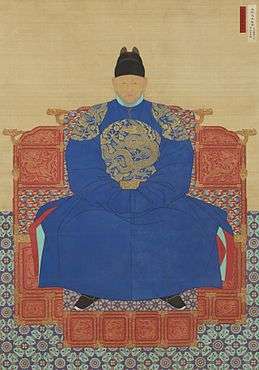
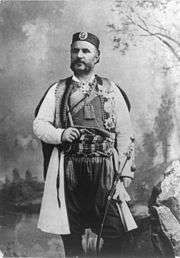 Nikola I, of the Petrović-Njegoš dynasty, ruled Montenegro from 1860 to 1918.
Nikola I, of the Petrović-Njegoš dynasty, ruled Montenegro from 1860 to 1918.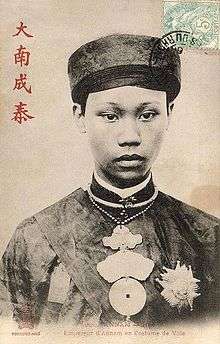 Nguyễn Phúc Bửu Lân, the Emperor Thành Thái, of the Nguyễn dynasty, was emperor of Vietnam from 1889 to 1907.
Nguyễn Phúc Bửu Lân, the Emperor Thành Thái, of the Nguyễn dynasty, was emperor of Vietnam from 1889 to 1907.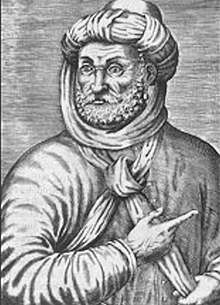 Ahmad al-Mansur, of the Saadi dynasty, was sultan of Morocco from 1578 to 1603.
Ahmad al-Mansur, of the Saadi dynasty, was sultan of Morocco from 1578 to 1603. Napoleon I, from the House of Bonaparte, ruled over France and Italy.
Napoleon I, from the House of Bonaparte, ruled over France and Italy.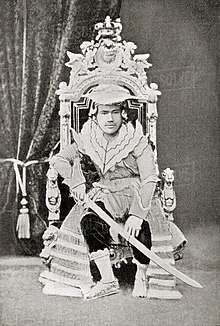 Thibaw Min was the last monarch of the Konbaung dynasty in Myanmar.
Thibaw Min was the last monarch of the Konbaung dynasty in Myanmar. Edward VI, from the House of Tudor, reigned as king of England and Ireland from 1547 to 1553.
Edward VI, from the House of Tudor, reigned as king of England and Ireland from 1547 to 1553.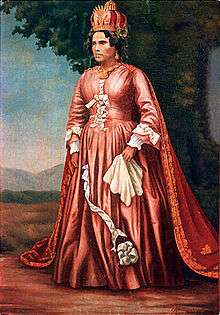 Ranavalona I, of the Hova dynasty, was queen regnant of Madagascar from 1828 to 1861.
Ranavalona I, of the Hova dynasty, was queen regnant of Madagascar from 1828 to 1861.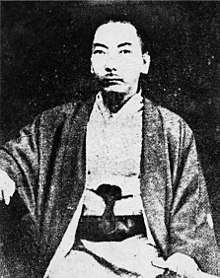 Shō Tai, of the Second Shō dynasty, was the final sovereign ruler of the Ryukyu Kingdom.
Shō Tai, of the Second Shō dynasty, was the final sovereign ruler of the Ryukyu Kingdom.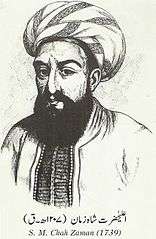 Zaman Shah Durrani Sadozai, of the Durrani dynasty, ruled Afghanistan from 1793 to 1800.
Zaman Shah Durrani Sadozai, of the Durrani dynasty, ruled Afghanistan from 1793 to 1800.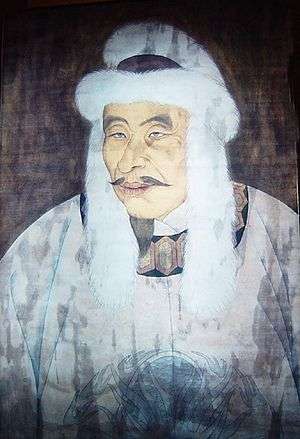 Wanyan Aguda, the Emperor Taizu of Jin, was the progenitor of the Jin dynasty in China.
Wanyan Aguda, the Emperor Taizu of Jin, was the progenitor of the Jin dynasty in China.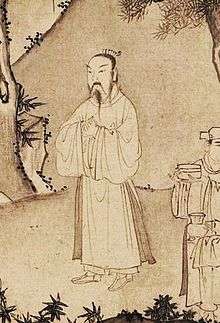 Trần Thuyên, the Emperor Trần Anh Tông, of the Trần dynasty, ruled Vietnam from 1293 to 1314.
Trần Thuyên, the Emperor Trần Anh Tông, of the Trần dynasty, ruled Vietnam from 1293 to 1314.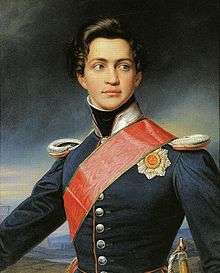 Otto I, from the House of Wittelsbach, was king of Greece from 1832 to 1862.
Otto I, from the House of Wittelsbach, was king of Greece from 1832 to 1862.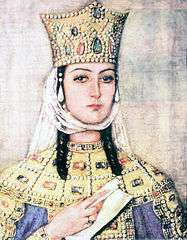 Tamar was queen regnant of the Bagrationi dynasty in Georgia.
Tamar was queen regnant of the Bagrationi dynasty in Georgia.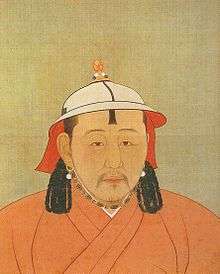 Khayishan, the Külüg Khan and Emperor Wuzong of Yuan, was the seventh khagan of the Mongol Empire and the third emperor of the Yuan dynasty in China.
Khayishan, the Külüg Khan and Emperor Wuzong of Yuan, was the seventh khagan of the Mongol Empire and the third emperor of the Yuan dynasty in China.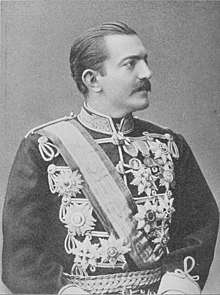 Milan I, of the Obrenović dynasty, ruled Serbia from 1868 to 1889.
Milan I, of the Obrenović dynasty, ruled Serbia from 1868 to 1889.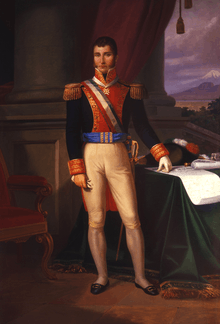 Agustín I was the first and only Mexican emperor from the House of Iturbide.
Agustín I was the first and only Mexican emperor from the House of Iturbide.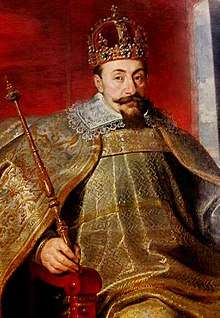 Sigismund III, from the House of Vasa, was monarch of Poland, Lithuania, Sweden and Finland.
Sigismund III, from the House of Vasa, was monarch of Poland, Lithuania, Sweden and Finland._-_Emperor_Leopold_I_in_coronation_armor.jpg) Leopold I, from the House of Habsburg, was emperor of the Holy Roman Empire, and king of Hungary, Croatia and Bohemia.
Leopold I, from the House of Habsburg, was emperor of the Holy Roman Empire, and king of Hungary, Croatia and Bohemia.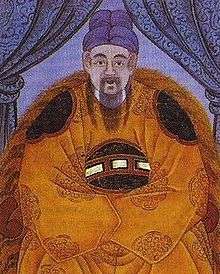
- Wilhelm I, from the House of Hohenzollern, was the first German emperor.
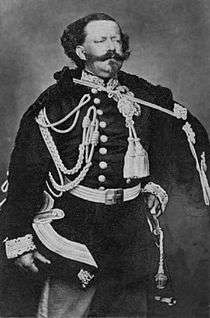 Victor Emmanuel II, from the House of Savoy, was the first king of Italy.
Victor Emmanuel II, from the House of Savoy, was the first king of Italy.
Extant dynasties ruling sovereign monarchies
There are 44 sovereign states with a monarch as head of state, of which 42 are ruled by dynasties.[lower-alpha 1]
Political dynasties in republics and constitutional monarchies
Though in elected governments, rule does not pass automatically by inheritance, political power often accrues to generations of related individuals in the elected positions of republics, and constitutional monarchies. Eminence, influence, tradition, genetics, and nepotism may contribute to the phenomenon.
Family dictatorships are a different concept in which political power passes within a family because of the overwhelming authority of the leader, rather than informal power accrued to the family.
Some political dynasties in republics:
- Family of Ziaur Rahman of Bangladesh
- Family of Sheikh Mujibur Rahman of Bangladesh
- Family of Aung San of Myanmar (Burma)
- House of Medici of Florence
- Nehru–Gandhi family of India
- Jinnah family of Pakistan and India
- Bhutto family of Pakistan
- Sharif family of Pakistan
- Chiang family of the Republic of China
- Family of Sukarno of Indonesia
- Koirala family of Nepal
- Somoza family of Nicaragua
- Lee family of Singapore
- Family of Solomon West Ridgeway Dias Bandaranaike of Sri Lanka (Ceylon)
- Family of John Churchill of the United Kingdom
- Trudeau family of Canada
- Adams family of the United States
- Bush family of the United States
- Clinton family of the United States
- Cuomo family of the United States
- Harrison family of Virginia of the United States
- Kennedy family of the United States
- Kheshgi family of Afghanistan, India and Pakistan
- Lee family of the United States
- Long family of the United States
- Roosevelt family of the United States
- Taft family of the United States
- Udall family of the United States
Influential and wealthy families
- The Agnelli family (Italy)
- The Ambani family (India)
- The Anheuser family (United States)
- The Arison family (United States)
- The Asper family (Canada)
- The Astor family (United States and United Kingdom)
- The Bamford family (United Kingdom)
- The Bacardi family (Cuba and United States)
- The Bancroft family (United States)
- The Baring family (United Kingdom)
- The Bazalgette family (United Kingdom)
- The Berenberg-Gossler-Seyler family (Germany)
- The Bertarelli family (Italy and Switzerland)
- The Bhutto family (Pakistan)
- The Botín family (Spain)
- The Bonnier family (Sweden)
- The Bronfman family (Canada)
- The Bulgari family (Italy)
- The Burke family (Ireland and United Kingdom)
- The Bush family (United States)
- The Busch family (United States)
- The Cabot family (United States)
- The Cadbury family (United Kingdom)
- The Carnegie family (United States)
- The Cholmondeley family (United Kingdom)
- The Churchill family (United Kingdom)
- The Cojuangco family (Philippines)
- The Conran family (United Kingdom)
- The Curzon family (United Kingdom)
- The Darwin–Wedgwood family (United Kingdom)
- The Desmarais family (Canada)
- The Disney family (United States)
- The Du Pont family (United States)
- The Egerton family (United Kingdom)
- The Fabergé family (Russia and United Kingdom)
- The Fleming family (United Kingdom)
- The Florio family (Italy)
- The Forbes family (United States)
- The Forbes family (publishers) (United States)
- The Ford family (United States)
- The Forte family (United Kingdom)
- The Freud family (Austria and United Kingdom)
- The Fugger family (Germany)
- The Getty family (United States)
- The Goldsmith family (Sweden and United Kingdom)
- The Gooderham family (Canada)
- The Gough-Calthorpe family (United Kingdom)
- The Grosvenor family (United Kingdom)
- The Guggenheim family (United States)
- The Guinness family (Ireland)
- The Gyllenhaal family (Sweden and United States)
- The Hearst family (United States)
- The Heinz Family (United States)
- The Harmsworth family (United Kingdom)
- The Hilton family (United States)
- The Howard family (United Kingdom)
- The Irving family (Canada)
- The Jinnah family (India and Pakistan)
- The Kennedy family (United States)
- The Keswick family (East Asia and United Kingdom)
- The Kheshgi family (South Asia)
- The Kim family (North Korea)
- The Koç family (Turkey)
- The Krupp family (Germany)
- The Lascelles family (United Kingdom)
- The Latsis family (Greece)
- The Lee family (United States)
- The Lehman family (United States)
- The Li family (China)
- The Livingston family (United States)
- The Louis-Dreyfus family (France and United States)
- The Mason family (United States)
- The McCormick family (United States)
- The Medici family (Italy)
- The Mellon family (United States)
- The Mendelssohn family (Europe)
- The Merck family (Germany and United States)
- The Mirvish family (Canada)
- The Mittal family (United Kingdom and India)
- The Molson family (Canada)
- The Molyneux family (United Kingdom)
- The Montefiore family (Morocco, Italy and United Kingdom)
- The Morgan family (United States)
- The Murdoch family (Australia and United States)
- The Newhouse family (United States)
- The Oppenheimer family (South Africa)
- The Packer Family (Australia)
- The Pattison family (Canada)
- The Peugeot family (France)
- The Porsche family (Austria)
- The Premji family (India)
- The Pritzker family (United States)
- The Rausing family (Sweden and United Kingdom)
- The Redpath family (Canada)
- The Roosevelt family (United States)
- The Rothschild family (France and United Kingdom)
- The Rockefeller family (United States)
- The Rupert family (South Africa)
- The Sackler family (United States)
- The Sainsbury family (United Kingdom)
- The Sassoon family (Iraq, India, China and United Kingdom)
- The Sawiris family (Egypt)
- The Schröder family (United Kingdom)
- The Shinawatra family (Thailand)
- The Spencer family (United Kingdom)
- The Stroganov family (Russia and Eastern Europe)
- The Sulzberger family (United States)
- The Swire family (East Asia and United Kingdom)
- The Taft family (United States)
- The Taittinger family (France)
- The Tata family (India)
- The Thomson family (Canada)
- The Thynn family (United Kingdom)
- The Thyssen family (Germany)
- The Tjin-A-Djie family (Suriname)
- The Tolstoy family (Russia and United Kingdom)
- The Toyoda family (Japan)
- The Trump family (United States)
- The Vanderbilt family (United States)
- The Villiers family (United Kingdom)
- The Wallenberg family (Sweden)
- The Walton family (United States)
- The Warburg family (United States)
- The Welser family (Germany)
- The Weston family (Canada)
- The Whitney family (United States)
- The Wittgenstein family (Austria)
- The Zardari family (Pakistan)
- The Zobel de Ayala family (Philippines)
See also
- Cadet branch
- Commonwealth realm
- Conquest dynasty
- Dynastic cycle
- Dynastic order
- Dynastic union
- Elective monarchy
- Family dictatorship
- Family seat
- Hereditary monarchy
- Iranian Intermezzo
- List of current constituent monarchs
- List of current monarchies
- List of current monarchies by continent
- List of current monarchs of sovereign states
- List of current pretenders
- List of empires
- List of family trees
- List of kingdoms and royal dynasties
- List of largest empires
- List of monarchies
- List of noble houses
- Non-sovereign monarchy
- Realm
- Royal family
- Royal household
- Royal intermarriage
- Self-proclaimed monarchy
Notes
- Existing sovereign entities ruled by non-dynastic monarchs include:
- The founder of a dynasty need not necessarily equate to the first monarch of a particular realm. For example, while William I was the dynastic founder of the House of Orange-Nassau which currently rules over the Kingdom of the Netherlands, he was never a monarch of the Kingdom of the Netherlands.
- The House of Windsor is descended from the House of Saxe-Coburg and Gotha, which is a branch of the House of Wettin. The dynastic name was changed from "Saxe-Coburg and Gotha" to "Windsor" in AD 1917.
- A sovereign state with Elizabeth II as its monarch and head of state is known as a Commonwealth realm.
- George V was formerly a member of the House of Saxe-Coburg and Gotha prior to AD 1917.
- Including:
- The Realm of New Zealand consists of:
- Including:

- Bailiwick of Guernsey (Crown dependency; not part of the United Kingdom or a British overseas territory)
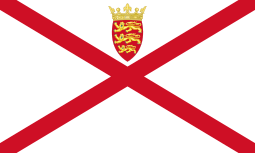
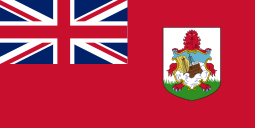
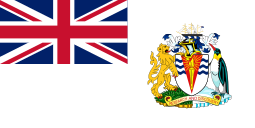
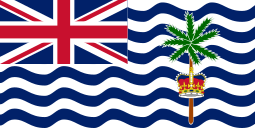
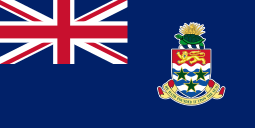
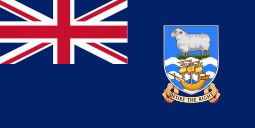
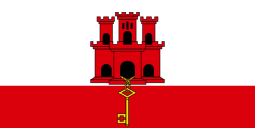
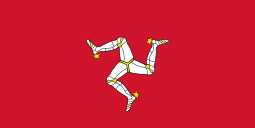
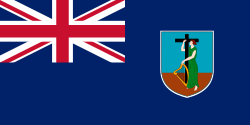
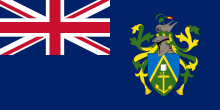
- Saint Helena, Ascension and Tristan da Cunha
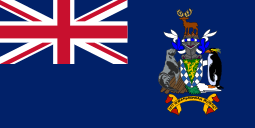
- Sovereign Base Areas of Akrotiri and Dhekelia
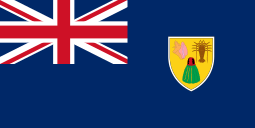
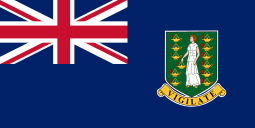
- The House of Belgium is descended from the House of Saxe-Coburg and Gotha, which is a branch of the House of Wettin. The dynastic name was changed from "Saxe-Coburg and Gotha" to "Belgium" in AD 1920.
- Albert I was formerly a member of the House of Saxe-Coburg and Gotha prior to AD 1920.
- Claimed by the royal house, but the historicity is questionable.
- The House of Norodom is a branch of the Varman dynasty.
- The House of Schleswig-Holstein-Sonderburg-Glücksburg is a branch of the House of Oldenburg.
- Including:
- The Imperial House of Japan, or the Yamato dynasty, is the world's oldest continuous dynasty. The dynasty has produced an unbroken succession of Japanese monarchs since the legendary founding year of 660 BC.
- The House of Hashim is descended from Banu Qatada, which was a branch of the House of Ali.
- The House of Luxembourg-Nassau is descended from the House of Nassau-Weilburg, which is a branch of the House of Nassau and the House of Bourbon-Parma.
- The Bendahara dynasty is the ruling dynasty of Pahang Darul Makmur and Terengganu. The Sultan of Pahang is the reigning Yang di-Pertuan Agong of Malaysia.
- The throne of Malaysia rotates among the nine constituent monarchies of Malaysia, each ruled by a dynasty. The Yang di-Pertuan Agong is elected by the Conference of Rulers.
- The House of Orange-Nassau is a branch of the House of Nassau. Additionally, Willem-Alexander is also linked to the House of Lippe through Beatrix of the Netherlands.
- The Kingdom of the Netherlands consists of:
- The House of Borbón-Anjou is a branch of the House of Bourbon.
- The House of Nahyan is the ruling dynasty of the Emirate of Abu Dhabi. The Emir of Abu Dhabi is the incumbent President of the United Arab Emirates.
- The President of the United Arab Emirates is elected by the Federal Supreme Council. The office has been held by the Emir of Abu Dhabi since the formation of the United Arab Emirates in AD 1971.
References
| Look up dynasty in Wiktionary, the free dictionary. |
- Oxford English Dictionary, 1st ed. "dynasty, n." Oxford University Press (Oxford), 1897.
- Oxford English Dictionary, 3rd ed. "house, n.¹ and int, 10. b." Oxford University Press (Oxford), 2011.
- Thomson, David (1961). "The Institutions of Monarchy". Europe Since Napoleon. New York: Knopf. pp. 79–80.
The basic idea of monarchy was the idea that hereditary right gave the best title to political power...The dangers of disputed succession were best avoided by hereditary succession: ruling families had a natural interest in passing on to their descendants enhanced power and prestige...Frederick the Great of Prussia, Catherine the Great of Russia, Maria Theresa of Austria, were alike infatuated with the idea of strengthening their power, centralizing government in their own hands as against local and feudal privileges, and so acquiring more absolute authority in the state. Moreover, the very dynastic rivalries and conflicts between these eighteenth-century monarchs drove them to look for ever more efficient methods of government
- Liddell, Henry George & al. A Greek–English Lexicon: "δυναστεία". Hosted by Tufts University's Perseus Project.
- Liddell & al. A Greek–English Lexicon: "δυνάστης".
- Liddell & al. A Greek–English Lexicon: "δύναμις".
- Liddell & al. "δύναμαι".
- Statement by Nick Clegg MP, UK parliament website, 26 March 2015 (retrieved on same date).
- "Monaco royal taken seriously ill". BBC News. London. 8 April 2005. Retrieved 27 January 2013.